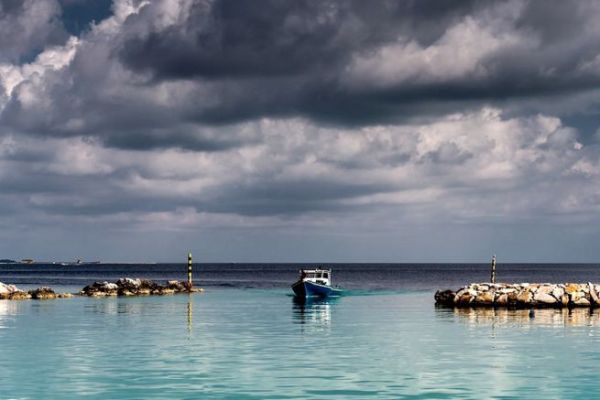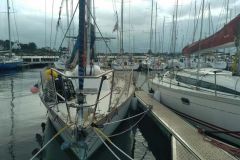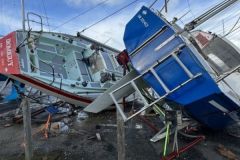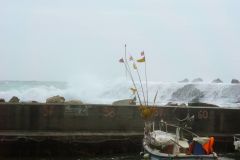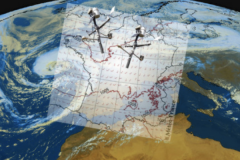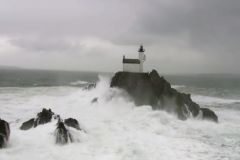Until proven otherwise, we cannot control lightning or repel it, at best we can channel it. It is the lightning rod system that will capture the lightning and channel it to the ground. On a boat, the protection against lightning consists in diverting the electric discharge towards the sea without damaging the hull, by preserving the crew and if possible the electronics.
This is what we call grounding In terms of construction and installation of equipment for ships of less than 24 m, it is the ISO 10134 standard that defines the rules of protection against lightning.
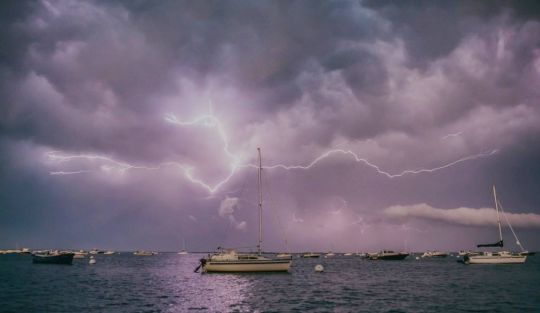
When you are at sea, how does the grounding work?
For a grounding system - or sea grounding, it's a bit the same - you first need a "lightning rod". It is often the VHF antenna that is used as a sacrifice to the wrath of Zeus.
In the case of a sailboat, the discharge current will prefer to be conducted by the aluminum mast rather than the stainless steel shrouds, which are much less conductive. The mast will therefore be the descent driver and must be connected to the keel (cast iron or lead) which will become the launch conductor (uh, to the ground).
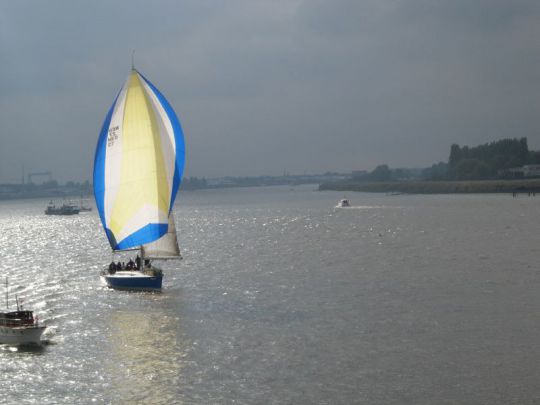
Which connection for the grounding?
For the connection between the two conductors that are the keel and the mast, one must use a copper braid or cable of minimum AWG 4, bigger will not be a problem. If the metal braid is not oxidized, it is a better conductor than a cable of the same gauge. Indeed, in the extreme case of lightning, the current tends to flow only on the surface of the conductors, it is the skin effect.
On boats without a cast iron or lead keel, the system is optimized with a grounding conductor under the hull. These are electrical dissipation electrodes designed to maximize contact with the water, at sea a 10 cm2 plate is recommended.
Thus, when lightning strikes the boat, the discharged electrical energy is grounded by being channeled to the water surrounding the boat.
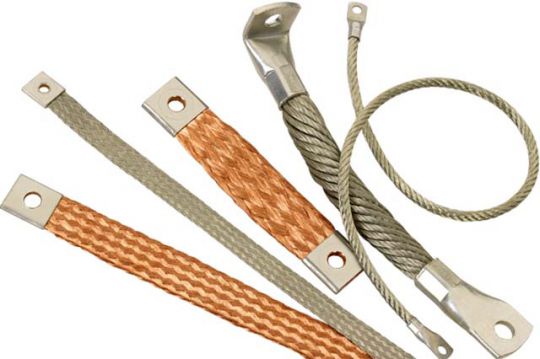
Protection system
When the time of the storm comes, the best protection is undoubtedly the metal boats made of steel or aluminum. They are real Faraday cages and the lightning will pass through the outside of the ship. These are the only boats that can be hit directly by lightning with considerably limited consequences for both the crew and the equipment.
For sailboats with a mast on deck, the protection system consists in having an effective grounding. You can also try the method attributed to the Glénans sailing school (but not very detailed in the manual), which consists of connecting the rigging to the sea with the anchor chain. The chain is wrapped around the mast and shrouds and left to "drag" in the water. Besides the delicate installation in real conditions and the potential damage to the hull, it is not obvious that it works. Indeed, it is difficult to make good electrical contacts with the links of a chain. And in case of a bad connection, the spark between the chain and the mast can melt and cut it.
There are also removable grounding systems that consist of a belt around the mast and heavy gauge sheathed cables terminated with electrodes that dip into the water to conduct lightning. Some boaters build their own grounding systems using automotive jumper cables and upgraded "crocodile clips" to provide better electrical contact. Unfortunately, these systems lack comparative feedback.
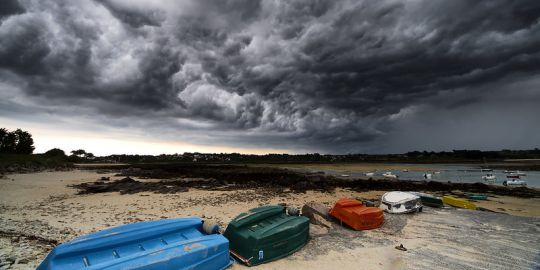
How to protect yourself on an open boat?
If you are on a metal boat, this is really the time to savor your choice. By being dry inside, you considerably limit human risks. For polyester or wooden boats, safety will depend on the grounding, you will take care to stay inside by avoiding standing too close to the mast and at the waterline. But On board open boats, the risk of being electrocuted by lightning is much higher.
When a storm approaches, for those who do not have a protective cabin such as open hulls, rigid semis or barques, the basic precaution is to return to the nearest port for shelter. There are far fewer lightning-related accidents on sailboats than on open boats. Since there is no security on the latter, you should return to the harbor without hesitation, making yourself very small, especially if you are already anchored.
